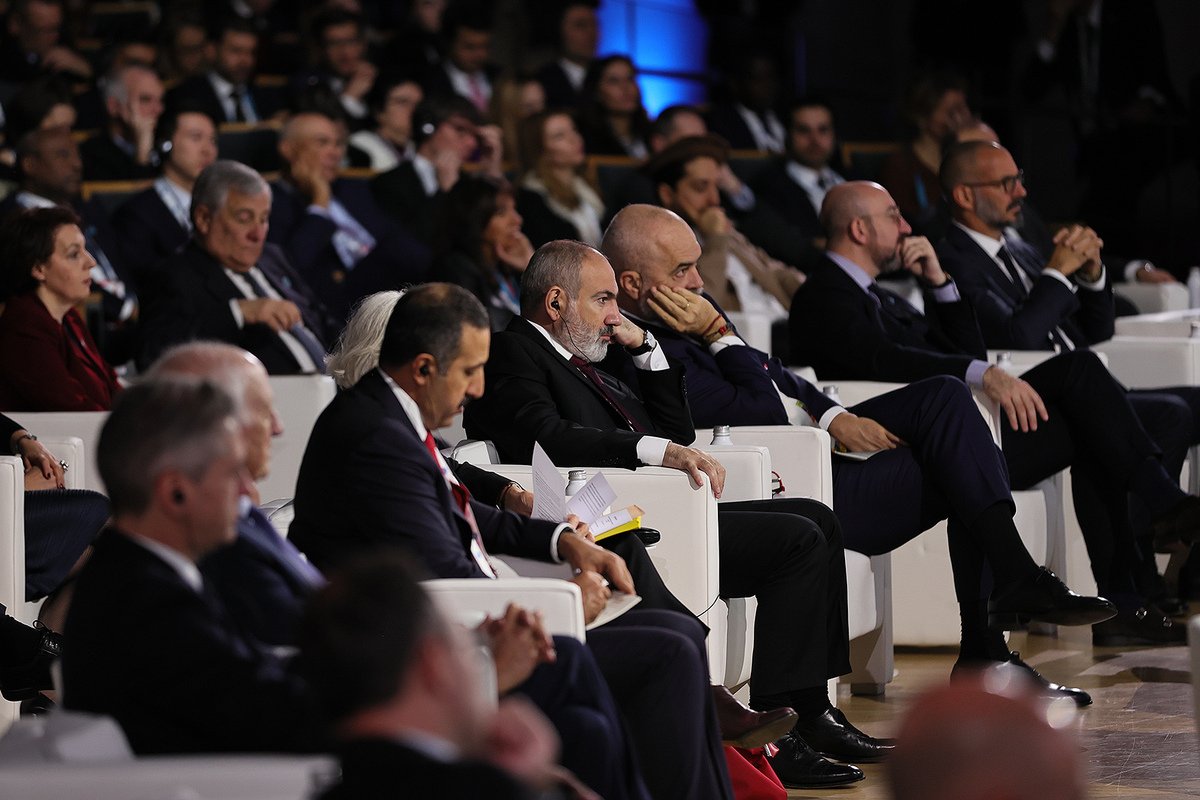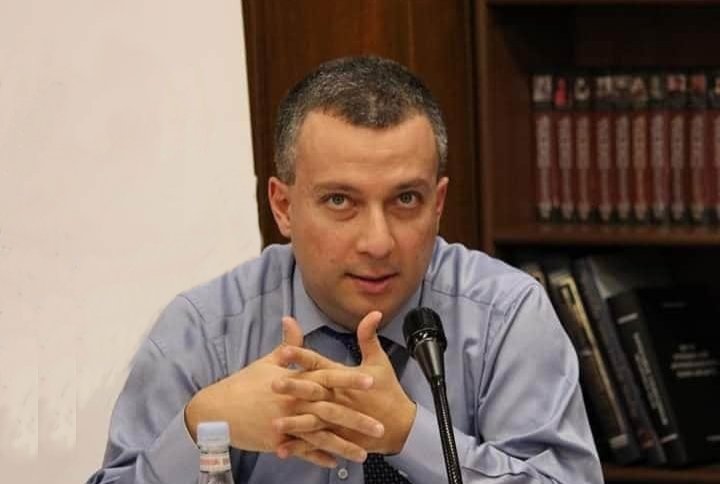The South Caucasus entered global geopolitics after the end of the Cold War. The newly independent states of the region found themselves in uncharted waters of regional competition, rivalry and co-existence. The conflicts in Artsakh/Nagorno Karabakh, Abkhazia and South Ossetia added additional layers of complexity to regional geopolitics. However, by the late 1990s, the more or less stable regional security order emerged: the Turkey-Azerbaijan-Georgia partnership, supported by the United States, and the Russia-Armenia strategic alliance, supported by Iran. These transformations occurred within the unipolar world order, marked by U.S. hegemony and the expansion of the liberal international order, or as some experts and politicians called it, the rules-based international order.
In the early 1990s, it seemed that the unipolar moment would continue forever, and the “End of History” notion was widespread among experts and academics. However, in the mid-2000s, cracks started to appear in the unipolar vision. The 2008 global financial crisis, the rise of China, the emerging tensions in Russia-West relations and the growing influence of countries such as India and Brazil all contributed to the start of the transformation of the post-Cold War order. Fierce debates are underway regarding where the world is headed, as fancy terms are approved and rejected, such as multi-polar world, new bipolar world, non-polar world, bipolar multi-alignment and no-rule world. However, one thing is clear: the world is slowly changing. The U.S. is still the primary global military power, as it spends more on the military than the next 10 countries with the world’s highest defense budgets combined, and will keep its position in the foreseeable future. The U.S. also has a solid economic base, leading in innovation and new technologies, such as robotics, data science, artificial intelligence and bio-engineering. Yet it faces a relative decline in power and influence. New power centers, especially in the economic area and digital world, have challenged U.S. supremacy.
Amidst the transformation of global order, many middle and small countries face formidable challenges to make the right decisions about their long-term foreign, defense and security policies. The issue is urgent, especially for small countries that find themselves in hostile environments under the threat of military attacks by neighbors. This applies to Armenia, which just passed through the greatest catastrophe in Armenian history since the 1915 Armenian Genocide – the forced displacement of the entire Armenian population from Artsakh.
Amidst the transformation of global order, many middle and small countries face formidable challenges to make the right decisions about their long-term foreign, defense and security policies. The issue is urgent, especially for small countries that find themselves in hostile environments under the threat of military attacks by neighbors. This applies to Armenia, which just passed through the greatest catastrophe in Armenian history since the 1915 Armenian Genocide – the forced displacement of the entire Armenian population from Artsakh.
The changes in the global order affect the geopolitics of the South Caucasus. The region is sandwiched between three major external powers – Russia, Iran and Turkey. Russia entered the South Caucasus, or Transcaucasia, in the early 19th century, while Iran had been in the region for millennia and the Ottoman Empire for several centuries. The South Caucasus later was entirely part of the Soviet Union. After the fall of the Soviet Union in 1991, Russia was the primary player in the region through its military and economic presence in Armenia and balanced relations with Azerbaijan, while the global hegemon, the U.S., facilitated the creation of the Turkey-Azerbaijan-Georgia strategic partnership. However, as Russia took steps to get closer to the West in the 1990s, or at least develop partner relations during the Russia-U.S. reset era in 2009-2011, the region was not part of a “great power competition.” The U.S. and the European Union slowly increased their penetration in the region through different initiatives and projects, such as the NATO “Partnership for Peace” program, “Individual Partnership Action Plans,” the EU neighborhood policy and the Eastern Partnership initiative, while accepting Russia’s role as the leading responsible actor for security and stability.
The transformation of the world order and the rise of “great power competition” brought the South Caucasus into the spotlight of global geopolitics. The region’s potential transit role as the route for North-South (Russia-Iran-South and Southeast Asia) and Middle corridors (China-Kazakhstan-Caspian Sea-South Caucasus-Europe), as well as a passage to connect Europe and Turkey with Central Asia, has increased the geopolitical significance of the South Caucasus. The Russia-West rivalry for the primary role of peacemaker between Armenia and Azerbaijan, which resulted in the establishment of Western and Russian negotiation platforms, was another sign of the South Caucasus becoming part of the “New Great Game.”
Georgia continues its path towards European integration, boosted by the recent decision of the European Commission to recommend EU candidacy for the country, while simultaneously seeking to develop economic cooperation with Russia and increase its partnership with China, probably hoping to use Beijing to balance its relations with Russia and the West. Azerbaijan needs time to digest its astonishing “achievements” in Artsakh – restoring total control over the region and expelling its Armenian population with zero consequences. At the same time, Baku is not interested in more Western influence in the region. Armenia is confused and disarrayed, seeking to broaden its cooperation with the West, hoping that the West will prevent further territorial losses in Armenia, and trying to understand what to do with its strategic partnership with Russia.

Various external actors pursue different goals in the region. Russia wants to keep its role of “kingmaker” and reduce the presence of the U.S. and the EU in the region. Turkey wants reduced Russian influence and a larger role for itself, but not for the West. The U.S. wants as little Russian and Iranian presence as possible. Iran does not want to see the influence of Turkey and the West increase. The EU wants a stable region, seeking to avoid direct competition and clashes with Russia, but in general acts alongside the U.S.
In the current configuration, we have two main patterns of coinciding interests–Russia, Iran, Turkey and Azerbaijan do not want to see the increase of the American and European presence and influence in the South Caucasus, preferring to manage their competitions through regional interactions. While Armenia de jure continues its alliance with Russia, it wants more EU and U.S. involvement in the region, while Georgia seeks to play with everyone.
As the world moves further away from the unipolar order and enters the era of great power competition, the geopolitical future of the South Caucasus remains complex. However, as all three major players of the region seem to act against the growth of Western influence in the South Caucasus, chances are low that the South Caucasus will end up as a part of the U.S.-led Western bloc, along with the EU, U.K., Canada, Japan, South Korea, Australia and others. The geographic proximity of Russia, Iran and Turkey may create a new regional order in the South Caucasus, dominated by these three countries, with China gradually increasing its economic presence. The South Caucasus may also become a part of the Eurasian bloc, a relatively loose partnership between Russia, China and Iran. At the same time, Turkey may adhere to a “multi-alignment policy,” balancing the Western and Eurasian blocs.
Under current circumstances, the regional states must carefully follow the geopolitical developments and make well-calculated decisions to avoid new geopolitical debacles and to secure the stability and prosperity of their populations.



Be the first to comment